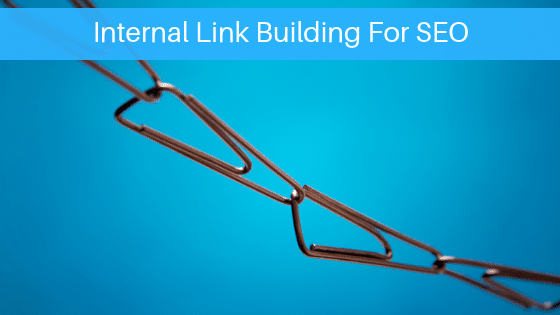Internal linking does wonders for your site’s authority and ability to rank. Google uses links to establish the relevance of your content, and indexes it accordingly. Pages with more quality, relevant links will place higher in Google’s rankings.
– Google can index your site faster if you have proper internal linking implemented.
– An internal linking network helps to guide users around the site, so they can easily find the information they are looking for.
– This easy navigability can help improve interaction rates and increase the possibility of conversions.
The website structure in itself is the shiny pearl that needs to be protected in order to gain benefit from the powerful SEO techniques and tactics applied to it. A strong website structure offers a fluent user experience, plenty of sitelinks, and a great crawling capacity for the Google crawlers to read the website to the fullest.
Coupled with the finest internal linking strategies and techniques, it ensures world-class SEO and hundred percent website optimisation results in the form of high website traffic and high return on investment. Before we guide you on how to develop a strong internal linking structure, here is what Google thinks about it:
“The number of internal links pointing to a page is a signal to search engines about the relative importance of that page. If an important page does not appear in this list, or if a less important page has a relatively large number of internal links, you should consider reviewing your internal link structure.”

Review Your Entire Content Library
If you already have lots of content on your site, Nextiny’s Bryan Gorman recommends “going backward before going forward.”
“At this point, you might have content going back 10 years that is still performing well for you. Internal linking wasn’t as crucial a factor then as it is today, so chances are that there’s an opportunity to leverage that to help your current and future content.”
“At Nextiny, we went through each of our client accounts as well as our own, exported lists of all blog posts, recategorized them by keyword/topics that we already had pillar pages for, and documented new opportunities for pillar content.”
“Once we had the articles categorized, we then went in and found/created linking opportunities from each article and linked each directly to our existing pillar pages.”
“We are finding that our pillar pages are performing extremely well for competitive keywords, and our supporting content is also seeing a lift.”
Link to the Main Content Grouping Page from Your Homepage
“Your homepage typically has far more authority than any other page on your website, so when you link to content from your homepage, you give that content a super-charged boost in authority.”
“But don’t just link to your content from a menu or the footer. Link from directly within the body content of your homepage. Google knows that links from the main body content carry more weight than navigational links.”
“Also, make sure you only link to ‘cornerstone content.’ Every link on your homepage that goes to a page with low value or low competition is a wasted resource. These links dilute the authority that your homepage passes to your cornerstone content.”
“One tasteful way of adding links on your homepage to cornerstone content is simply to have a section on the homepage with a subheading like ‘Resources’ or ‘Learn More.’ Subheadings like this give you a nice segue from the usual homepage messaging about who you are and what you do.”
Build Internal Link Silos
Silos are similar to cornerstone/pillar/hub-and-spoke content, but instead of starting with a topic and creating content from there, silos start with a piece of content that’s already driving a lot of traffic.
“First, identify what pages are getting the most organic traffic site-wide in Google Analytics,” says Dresean Ryan of Dresean Consulting. “Once you’ve identified those pages, you want to add internal links to other pages of your website from those highly trafficked pages.”
“Because those pages get the most traffic, it increases your chances of people actually seeing your internal links and engaging with them, therefore boosting your dwell time,” Ryan says.
Silos also work well for ecommerce sites with lots of category and/or product pages.
However, Authority Hacker’s Balazs Hajde cautions against over-siloing: “Approach site structure with a measured siloing mindset. There are instances when breaking down a category into subcategories will make your content too thin.”
“Make sure to do extensive keyword research and analyze how segmented a topic has to be before constructing a silo. Some topics might need several subpages, while others are best handled as one single resource.”
Use Internal Links to Maximize Geographic Relevance
“One of the most effective internal linking methods pertains to businesses with multiple locations,” says Michal Rutkowski of Active Business Growth. “We are strong proponents of building location landing pages to maximize geographic relevance across the different markets that a given business covers.”
“Within these pages, we typically develop long-form text content describing the various products and/or services the business offers. The keywords within this text are then linked to internal pages that cover the products/services in depth.”
“We’ve observed that when these landing pages get indexed and begin to rank, our clients start to rank better for specific keywords across the different geographic markets.”
Link to the Content People Are Most Likely to Click
“It’s very hard to keep people going down the chain of links, so it’s best to choose your most valuable and relevant content,” says Amanda Foushee of Marsden Marketing.
“For example, if we have both a blog post and a case study about the same subject, we’ll link to the case study since it serves as a better proof-point than a blog that speaks in generals.”
Compose Enticing Anchor Text
“Many SEOs and SEMs optimize their site aggressively for search engines, but I’ve found with internal linking the best results come from linking for humans,” says Jennifer Chen of Team Building NYC. “Write your copy and anchor text in such a way that visitors want to click on it, and you should see exceptional results.”
Several other respondents agree:
“Make sure that your internal links are descriptive to help a user understand what they’re about to view or read. In return, you’ll see increased user engagement, lower bounce rates, and ideally, higher conversion rates.” (Jake Lane, Press Cleaners)
“Make sure the anchor text is relevant to where you’re linking your traffic too. You want to ensure your internal linking provides client usability and gets them interested in what comes next.” (William Chan, Inbound Law Marketing)
“When I’m writing an article and I mention a related concept—but don’t want to spend time within the article explaining it—I’ll drop a line like ‘If you want to learn more about X, check out this other article,” Duncan Pacey says. “And I’ll always use the article title, not just ‘read this article.’”
“Why? ‘How to use PPC in an effective content marketing strategy’ is a better anchor than ‘this article’ in terms of SEO.”
“If I don’t want to interrupt the flow of an article with a throwaway ‘more reading’ line, I’ll naturally weave the same thing into the paragraph so it’s obvious that clicking will yield more important info,” Pacey says.
Read more Internal link building practices you ought to follow
_______________________________________________________________________________
For more details about our seo service packages, pls contact us
BIGBIGSEO Team
Email: bigbigseo@gmail.com
Skype: bigbigseo
https://www.facebook.com/bigbigseo
Thank you!




